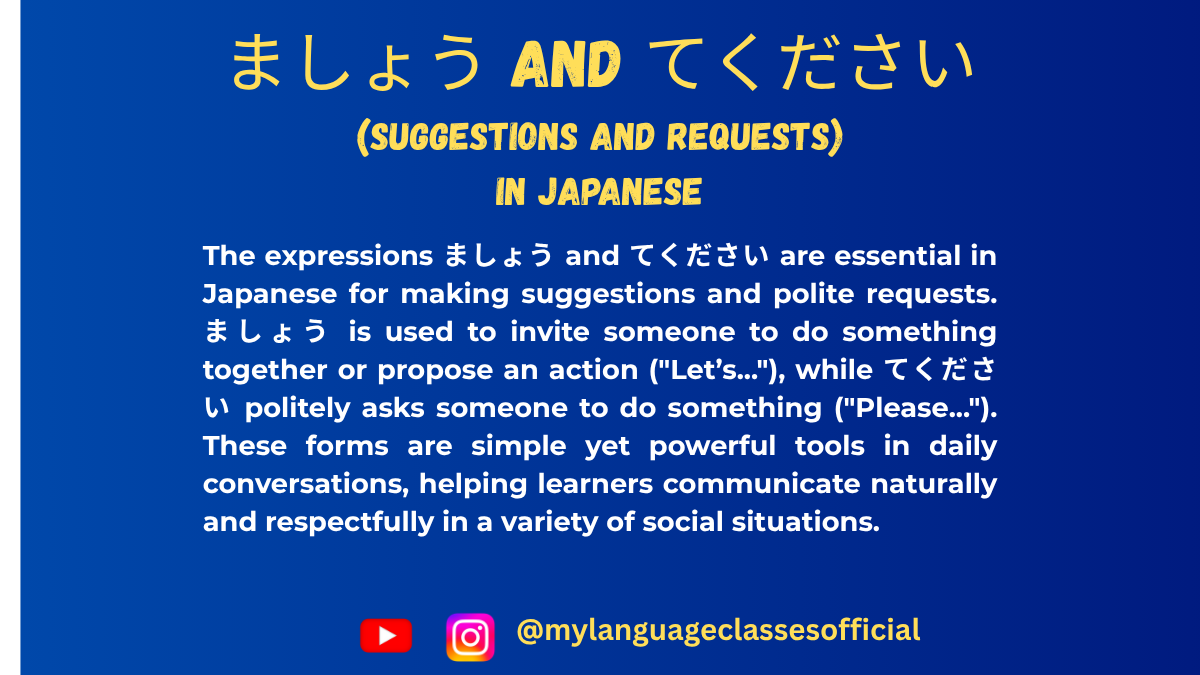Your cart is currently empty!
Tag: how to politely ask in japanese

Making Suggestions and Polite Requests ましょう and てください in Japanese
Mastering Polite Suggestions and Requests in Japanese
If you’re learning Japanese, understanding how to make polite suggestions and requests is a key part of effective communication. Whether you’re planning activities with friends or politely asking for help, two common expressions—… Read more

